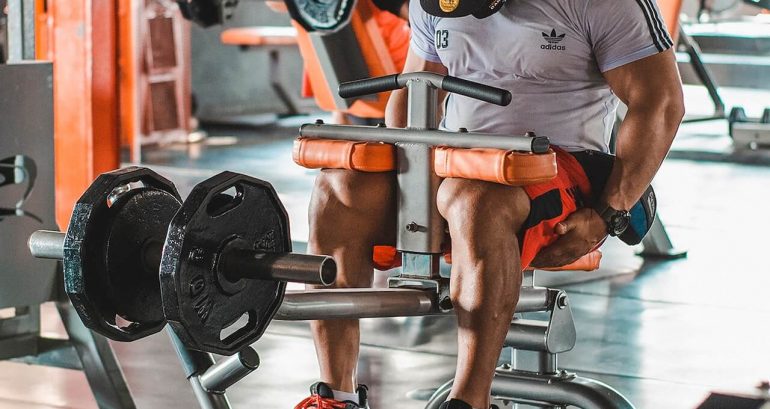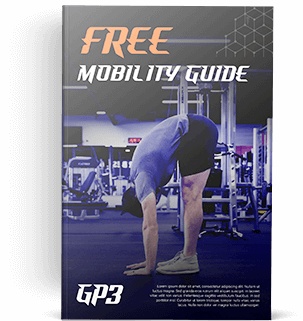Key Points:
1. When it comes to being vs. doing, we’re obsessed with being the “doer.”
2. This can actually make it harder to learn new skills, and more painful when we fail at things we enjoy.
3. The book, The Inner Game of Tennis, offers an incredibly intriguing model for learning and competing without ego.
Estimated Reading Time: 4-8 Minutes
Last week’s piece briefly touched on the difference between “being” vs. “doing.”
This was a key theme in a short but fascinating book I recently read, called The Inner Game of Tennis. In it, author Timothy Gallwey describes two games that play out during every match. There’s the one we immediately think of, between two players hitting a small, greenish-yellow ball back and forth while grunting from exertion, and a second, much less visible contest. This one happens in the mind of each player, and he argues that it’s an even more difficult battle than the first. It’s a game against one’s own emotions, self-doubt, and thoughts.
The opponent is the voice that says things like, “How could you screw that shot up? You’ll never win playing like this!” or, “You had such a big lead! Now you’re going to blow it and look like an idiot!” It could even be thoughts like, “Wow, that player is great but you’re playing so well, you could actually win this game!”
Galwey’s observation has been that those who perform better in the “Inner Game” often tend to win the “Outer Game” as well. This can even be the case when there is a large gap in skill between competitors. This “Inner Game” isn’t just limited to tennis, however. These thoughts of doubt and self-criticism can derail us in any endeavor, especially, if we haven’t yet realized that We Are Not Our Thoughts. No apologies for linking to this article for the 20th time. Can you tell I think it’s important?
So, how do you win the inner game?
Recalling that thoughts are little more than reflexes is the first step. We do have a choice whether or not to believe, engage, and identify with thoughts that tell us we’re terrible at something and bound to screw it up. Beyond that, Gallwey proposes a fascinating method for helping win the inner game.
He talks about “Self 1” and “Self 2.” Self 1 is the thinking brain, the voice that judges, criticizes, and thinks it has full autonomy over our actions. Basically, it’s our ego. We tend to identify with Self 1, even though Self 2 is the one that actually does things. Let’s use some examples to make this a bit more concrete. For the vast majority of the day, “you” give no conscious thought to breathing, your heartbeat, or pumping blood throughout your body. And yet, all of this happens entirely on its own, right? There’s no need for “you” to direct or control anything.
I put “you” in quotation marks to highlight that there are countless events and actions that happen to, through, and with us, but without us exerting any direct control. We’re kind of doing these things, but kind of not. I know this can feel a bit abstract, so bear with me here. Let’s make the concept of Self 2 a bit more concrete.
When trying to learn a new skill or increase our proficiency at a current one, Gallwey recommends a deceptively simple process:
- Visualize what you want to happen
- Relax
- Let Self 2 make it happen
Repeat until successful. That might seem a little out there at first but remember…
We’ve all used this exact process before!
He astutely points out that this is identical to the way in which we learned to walk. Babies observe others moving around on two legs and then try to copy it. Seemingly by magic, they eventually figure it out. They never need to be told, “Okay, first you use one leg to stabilize. Drive your foot into the ground as you lift your other leg, then place it one stride length ahead of you. Make sure to spread your toes as you land for greater balance, then shift your weight from your heel to the ball of your foot as you push off.”
They never need any of this!
Even further, they try and fail countless times before succeeding, yet never give up. As far as we know, there has never, in the history of humanity, been a child that said to itself, “You’re such a bad walker. Just give up already and crawl everywhere instead.” That sounds ridiculous, right?
But as adults, we say things like that to ourselves all the time.
For most of us, our default becomes trying to use too much effort and thus making things worse. In the Inner Game, Gallwey mentions some telltale signs of a tennis player trying too hard. They tense up the muscles of their face, neck, and hands. This does not help, because the perfect swing of a tennis racket looks smooth and fluid, almost effortless, despite the tremendous amount of force it can generate. If a player is trying to improve their backhand, for example, and all their muscles are tense, it’s not going to work. It’ll probably get worse, because they’re trying to do too much.
Coaches can easily fall into this trap as well. One of the things Gallwey said that really resonated with me was that coaches often try to give too much information. They’ll tell a student that their hips are too high, their grip angle is slightly off, they need to follow through more, and shift their weight to a different part of the foot.
Here’s the problem. This demonstrates that the coach is incredibly knowledgeable about the technical aspects of what makes a good tennis swing, and the student may be impressed, but it rarely helps improve their form!
A tennis ball comes at you so incredibly quickly, and the swing itself takes a fraction of a second. There is no way you can think about your feet, hips, grip, plus your follow through, and execute a successful swing.
I know I’ve been guilty of this in the past, too. Especially when trying to teach movements that are both fast and complex, like a hang clean, there have absolutely been times when I’ve overwhelmed a client or student-athlete with information. They’re typically much more successful when they focus on one single cue, watch a video of themselves completing the movement, or are even left alone to sense with their bodies whether or not the movement felt right.
We have an obsession with being the “doer.”
One of the things Gallwey stresses most is that in the event of a successfully executed movement, we need to give Self 2 the credit. As a reminder, Self 2 is our natural, innate intelligence that taught us how to walk. It is not the critical, judgmental, thinking mind. That’s Self 1.
Now, Self 1 has an incredibly hard time with this. Our egos want credit for everything that goes well. Also, depending on the identity patterns we hold, they want the blame for things that go poorly. To that end, one botched shot is shrugged off. But, three in a row becomes, “My stroke is really off today.” Too many flubbed shots in the same month morphs into, “I have a bad backhand.” Worse, if we believe and identify with thoughts like this, we probably will end up with a bad backhand!
We’ll finish today’s piece with a personal story about a time I fully embraced the principles of The Inner Game. In April of this year, a friend of mine had a bachelor party in Louisville. A bunch of the guys in attendance were avid golfers, so we signed up to play nine holes. Now, my experience with golf is pretty limited. I didn’t try it for the first time until after graduating college, and it was mostly used as an excuse to drink with my former teammates at the annual alumni golf outing.
By no standards would I be considered “good” at golf.
This time, something was different.
Despite having not picked up a golf club for nearly three years, I actually looked like I knew what I was doing. I was making solid contact with the ball, keeping my shots on the fairway, and even hit a shot with a little bit of draw that a friend of mine said was one of the best he’d ever seen. Another friend of ours in the group asked me how the heck I’d hit a shot like that.
I answered honestly. I had no idea! If you’d asked me to recreate that shot using my thinking brain and conscious effort, there’s zero chance I’d have been able to do so. The only thing I remember being explicitly conscious of with the swing was keeping my wrists loose and relaxed.
By some miracle, I actually hit par on 2 of the 9 holes we played. Had my putting been more successful, I might have done even better. Ironically, due to having played a great deal of minigolf as a kid, this was the area where I tried too hard!
Playing golf that day was quite a fascinating experience, because it was probably the first time in my life where I engaged in a competitive activity for a long period of time but had absolutely zero egoic attachment to the outcome.
The interesting part was that I was the least experienced golfer in my foursome. The other guys golf regularly and are quite skilled. They hit many incredible shots throughout the day, but I noticed something else.
If they messed up a shot, they’d really beat themselves up for it, to the point where it affected their enjoyment of the afternoon. Now, I’m fairly sure why this may have been the case. They likely hold “good golfer” as at least a small part of their identity. When that’s the case, a poor shot feels uncomfortably threatening to that identity.
Competing without ego and identity
I recognized this instantly, because I’ve done something similar countless times in the past. Particularly when it comes to soccer, I’ve let a bad performance ruin my day more times than I can remember. It’s taken a long time to untangle my ego and identity from my abilities on the soccer field, so I don’t fault them for any of this.
Self 1’s voice can be incredibly loud. Choosing when to ignore it first takes the recognition that we have the ability to tune it out. Then it takes practice. But it’ll definitely be worth it. Once I’d experienced the joy of competing without an egoic attachment to the outcome, I never wanted to compete any other way.
Try it out yourself and let me know how it goes!

